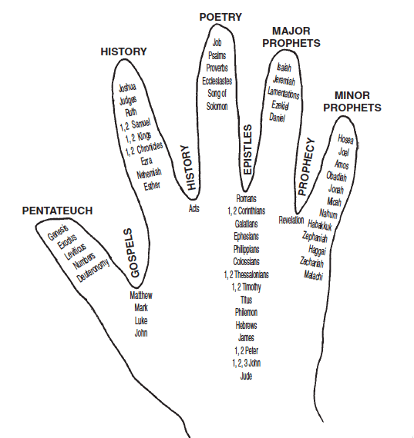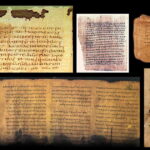Part 1 of the Series: How the Bible Is Organized
“God, after He spoke long ago to the fathers in the prophets in many portions and in many ways, in these last days has spoken to us in His Son…” — Hebrews 1:1–2 (LSB)
Introduction: A Divine Library
Imagine walking into a vast library, curated by God Himself. Sixty-six books. Over 40 authors. Three continents. Three languages. One cohesive story. That is what we have in the Bible: a divinely inspired library arranged to reveal God’s redemptive purposes from creation to new creation.
But how exactly is this library organized? How did we get these 66 books—and not more or less? And can we trust that what we hold in our hands is truly the Word of God?
This article—Part 1 of a 3-part series—explores how the Bible is structured as a whole. In Parts 2 and 3, we’ll zoom in on how the Old and New Testaments are specifically organized.
What Is the Bible?
The Bible is not a single book but a collection of sacred writings. The word Bible comes from the Greek biblia (books), indicating its nature as a compilation. Despite being composed over a span of roughly 1,500 years, these books together tell a single, unified story: the story of God redeeming a fallen world through Jesus Christ.
Canon: Recognizing, Not Creating Scripture
The term canon means “rule” or “measuring rod.” When applied to Scripture, it refers to the collection of books recognized as divinely inspired and authoritative. As Grudem notes in Systematic Theology, the canon of Scripture is not something created by the church, but recognized by the people of God based on divine authorship, prophetic/apostolic authority, and spiritual usefulness.
Canon recognition follows a divine pattern:
• Old Testament: Prophetic origin, Hebrew language, use in Jewish worship
• New Testament: Apostolic origin, consistent doctrine, widespread early church use
The canon is closed—no more books are being added—because the final revelation has come in Jesus Christ (Heb. 1:1–2; Rev. 22:18–19).
The Two-Testament Structure
The Bible is divided into:
• Old Testament (39 books) – Law, History, Poetry, Prophets
• New Testament (27 books) – Gospels, Acts, Epistles, Revelation
These numbers provide a helpful mnemonic:
• OT: 5 (Law) – 12 (History) – 5 (Poetry) – 5 (Major Prophets) – 12 (Minor Prophets)
• NT: 4 (Gospels) – 1 (History) – 21 (Epistles) – 1 (Prophecy)

This structure is more than literary—it reflects the covenantal unfolding of God’s plan.
From Scroll to Scripture: Textual Transmission
God used human authors, in their own language and cultural setting, to write His Word. The Old Testament was written primarily in Hebrew (with small portions in Aramaic); the New Testament was written in Koine Greek.
The Bible was transmitted through meticulous scribal practices:
• Hebrew Scrolls: Masoretic scribes followed strict copying rules (spacing, ink, ritual cleansing)
• Greek Manuscripts: Copied into codices and preserved through multiple manuscript families (Alexandrian, Byzantine, etc.)
The Dead Sea Scrolls confirm the early use and reverence of most OT books, showing that Scripture was not invented late, but preserved early.
Can We Trust the Bible We Have Today?
Yes. The manuscript evidence for the Bible far surpasses any ancient document in both quantity and proximity to the originals.
Combine this with:
• Early Jewish and Christian testimony (Josephus, Melito, Athanasius)
• Consistent theological message
• The Holy Spirit’s witness in the heart of believers
And we have every reason to trust the 66 books of the Bible as the very Word of God.
Application: Reading the Bible as a Unified Whole
Understanding how the Bible is organized deepens our appreciation of its unity. Each book contributes to the one story of redemption, and every genre—law, history, poetry, prophecy, gospel, epistle, apocalyptic—plays a vital role.
“The Scriptures are not idle words. Indeed, they are your life.” — Deut. 32:47
Coming Next:
• Part 2: How the Old Testament Is Organized
• Part 3: How the New Testament Is Organized
These articles will provide deeper insight into each testament’s structure, history, and theological significance. They’re crafted to equip you, the reader, to walk faithfully with confidence in God’s written Word.



